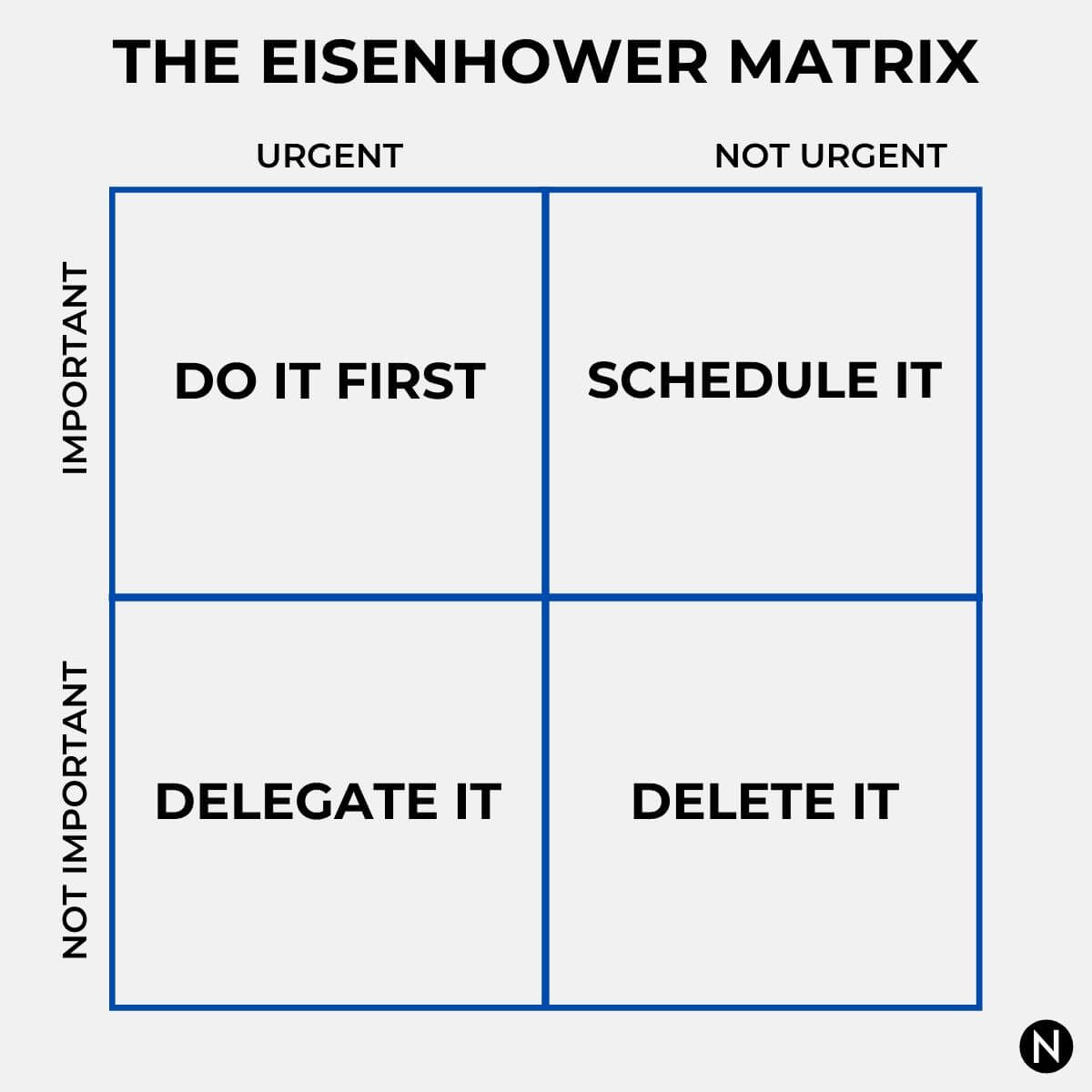After the year that Shall Not Be Named, it seems like this year has started at an even more frantic pace than many of us thought possible.
In our current work lives, no matter our role, I am sure most of us feel like there isn’t enough of us, or our team, to share around.
We are faced with new tasks and projects almost every day and so often we default to working on the urgent, the thing flaming largest and fastest in our line of sight.
Working on the urgent gives us the dopamine hit we crave by helping us tick off tasks, the ones crowding for our attention.
This, however, is a dangerous approach, particularly as leaders. It often encourages a short-term view if we aren’t aligning urgent and important. It keeps us stuck in the incremental instead of the transformational.
Eisenhower’s Principle
We all know Eisenhower’s Principle.
In a 1954 speech, former U.S. President Dwight D. Eisenhower, who was quoting Dr J. Roscoe Miller, president of Northwestern University, said: “I have two kinds of problems: the urgent and the important. The urgent are not important, and the important are never urgent.”
As leaders, we know what is important and what is urgent, but we sometimes lack the courage or the perspective to shift our actions.
Important activities have an outcome leading to us achieving our goals, often long term, and usually quite strategic and broad.
Urgent activities demand immediate attention, and they demand attention because the consequences of not dealing with them are immediate.
Strategic decisions

It’s useful to have an Eisenhower matrix on your desk, or scribble one in your notebook (yes, I am an analogue person). Look at your to-do lists, your projects, your tasks.
Pop them all in your matrix, looking ahead for the next week or month. Perhaps look at your organisational or departmental strategy to guide you.
Once you are done, it’s time to assess the balance of items in your quadrant, and where they are sitting. Which items move you closer to achieving strategic outcomes? Which items will affect the outcome of the business in the next three to five years? Highlight those.
Then reassess. As a strategic leader, do you have enough items in your important and urgent quadrant? What about your important and not urgent quadrant?

How to shift from urgent-detergent to important and urgent
Once we have identified the urgent and important (ideally strategic items), we need to re-train ourselves, the goat-tracks in our brains, to not just focus on the urgent, but to deliver on the urgent and important.
Those goat tracks are seductive for our task-oriented, dopamine-fuelled brain.
The urgent and important isn’t always something we can deliver in half an hour and is absolutely not achieving a clean and actioned inbox. The urgent and important is often project-based, has multiple milestones, and if we are doing our jobs well as leaders, it involves stakeholder consultation. All this means we don’t get a quick task-tick hit.
Shifting from urgent-detergent you could consider:
- Setting aside a block of time each day to work on urgent and important.
- Allowing yourself a set period of time to work on urgent and not-important, like your inbox. Remember, answering emails is not your job, it merely facilitates the other outcomes of your job. Minimise this.
- Understanding what you really need to do to achieve a big impact, not being seduced by the lure of output over outcome.
- Celebrating the milestones of the urgent and important in the same way you celebrated the urgent and not important completed tasks.
- Understanding what needs to be done now, next and later.
- Delegate your urgent and not important, or if you can’t delegate it, identify with your CEO and exec team why you won’t be prioritising this and how your turnaround or completion timelines may be impacted.
Help your team
Help your team to do the same – what will help them achieve their KPIs contributing to the strategic success of the department? Where can they invest their time on the important to diminish the volume of urgent and unimportant down the track?
By producing a framework for a recurring task can they help others give them a better brief reducing rework?
How do they triage their inbox? Do they return to it sporadically or does it interrupt them in a flow moment?
How many meetings do they attend where an email would suffice? This falls into not-urgent and not-important.
As leaders, if the culture is reactionary, if it is unplanned, if it doesn’t allow enough time for important because we are dealing with urgent constantly, we have a responsibility to help shift and reshape the organisation responses.



